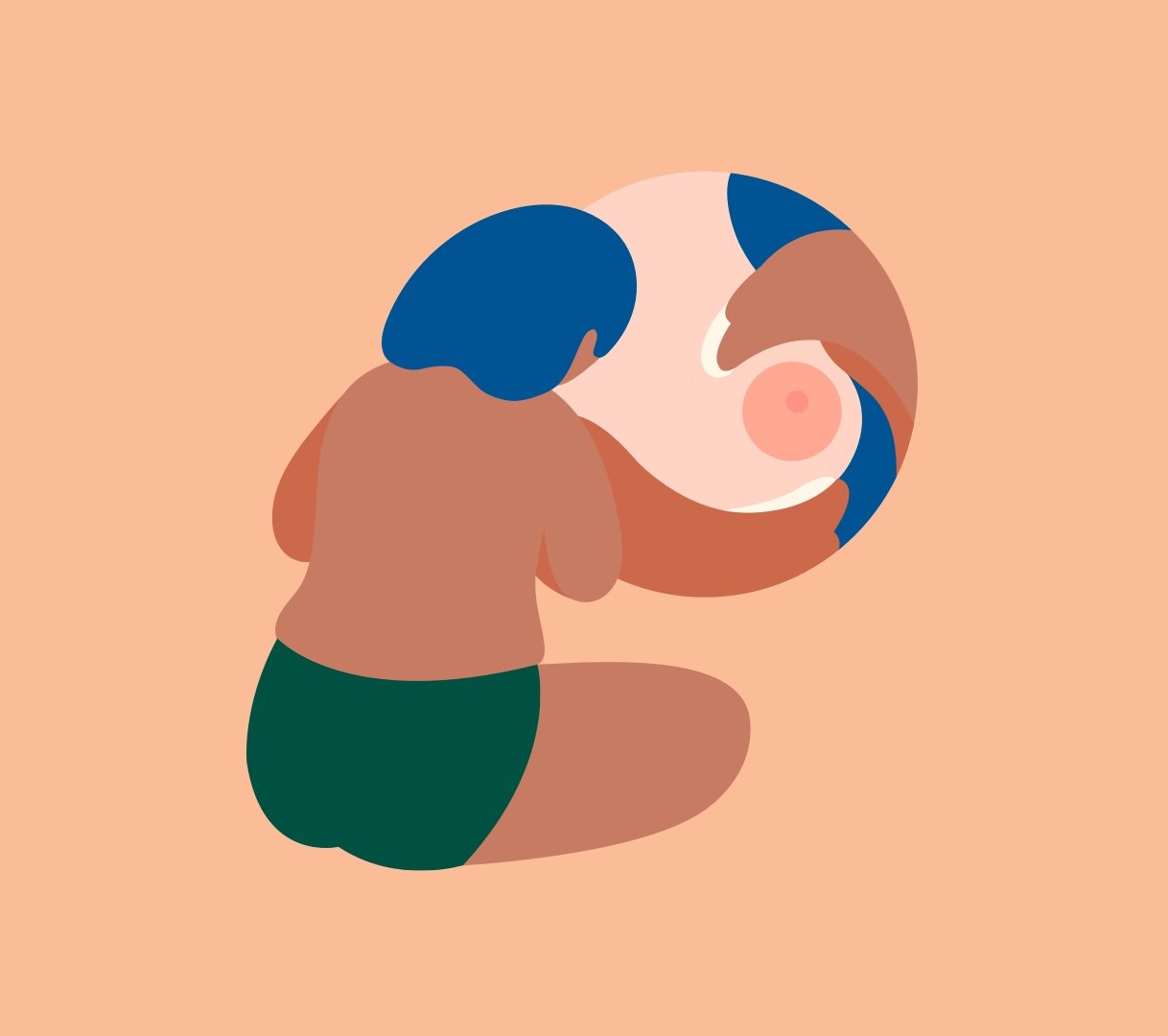Shop the Breastfeeding Collection here.
What is this?
It’s not uncommon for breasts and nipples to be itchy while breastfeeding — not only are they constantly being pulled and sucked, they’re also getting wet many times a day, and the rapid expansion of breast tissue (or engorgement, which some people experience in the first few weeks of breastfeeding), can all lead to dry, irritated skin. That said, if itchy nipples are accompanied by pain, it can also be a sign of thrush, an infection that should be treated by a doctor.
How common is it?
It is very common. Most new mothers experience this during the first month as the tissue acclimates to breastfeeding.
How long does it last?
When treated with moisturizer or a nipple balm, itchy breast skin should resolve within a few days.
What can I do about it?
Itch management depends on the cause. Most likely it’s irritation caused by dry skin. If that’s the case, here are some ways to soothe any pain or itchiness:
Moisturize
Look for gentle, scent-free products, ideally ones that are coconut- or olive oil-based. (Coconut oil and olive oil also work well on their own.) Steer clear of nipple products that come in a jar — in the event that you have thrush, the process of applying balm with your finger and then dipping it back in the jar again can spread bacteria and perpetuate an infection. Instead, opt for products in tubes. (Our Nip Nourish is a great option here.)
Add a protective barrier
Lanolin (an animal-derived wax) and plant-based alternatives (like our own Nip Protect) act as a protective skin barrier to seal in moisture. Lanolin and alternatives can be applied over nipples to lock in moisture. They can also be applied liberally before showering so that water and soap don’t dry out the skin further.
Where can you find it
Our Nip Duo is the perfect solve for breastfeeding nipples to both moisturize and protect. In tandem or on their own, our balms provide relief while breastfeeding.Avoid soap
In addition to moisturizing, it can be helpful to avoid getting soap on your breasts and nipples as it dries out the skin.
Apply a warm compress
If you are nursing, rubbing a bit of expressed breast milk and applying warm compresses have been shown to help the reduce pain of itchiness.
Try cooling nipple pads
Glycerin gel pads can cool sore, hot or chafed nipples, and they can easily be worn under T-shirts or bras. If dry, itchy nipples persist for more than two weeks, consult a doctor as it may be a sign of a more serious issue.
Where can I get all this stuff?
Bodily's breastfeeding collection features solution sets and remedies to calm itchy nipples and other common complications of breastfeeding. Our Everything Bra is especially soft and can be a solution for itchy nipples. We also researched and sourced plant-based alternatives to lanolin in both our Nip Nourish and Nip Protect Balms that would still hydrate and repair cracked nipples. The kit contains non-slip, organic, reusable breast pads made of eco-friendly bamboo that are designed to keep you dry, stay in place, and also ease discomfort from sensitive or sore nipples.
We also tried several nipple shields: Lansinoh's nipple shield is Bodily's choice during nursing if you're feeling especially raw. (Note nipple shields are a short-term solution. Consult a doctor if pain persists.)
When should I be worried?
If you experience stabbing pain, burning or the sensation of pins and needles when your milk flows, or between feedings, also seek medical attention.







